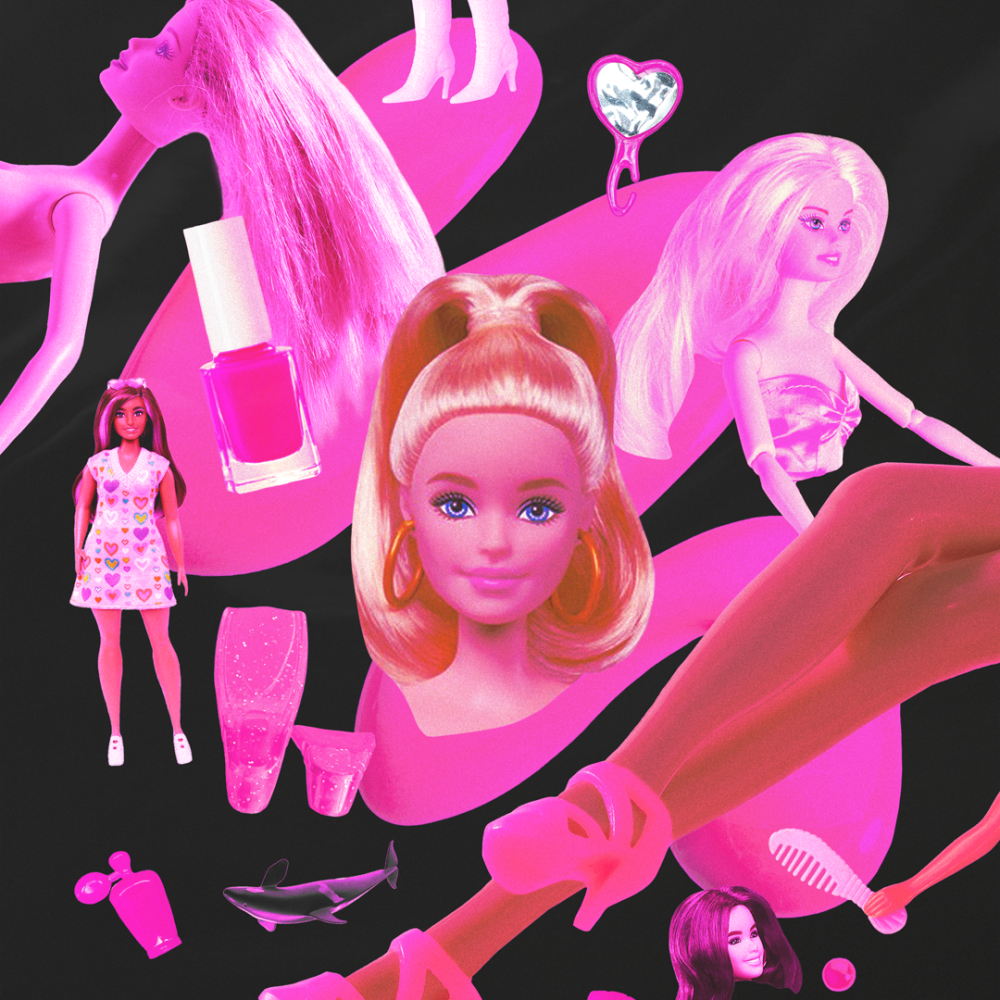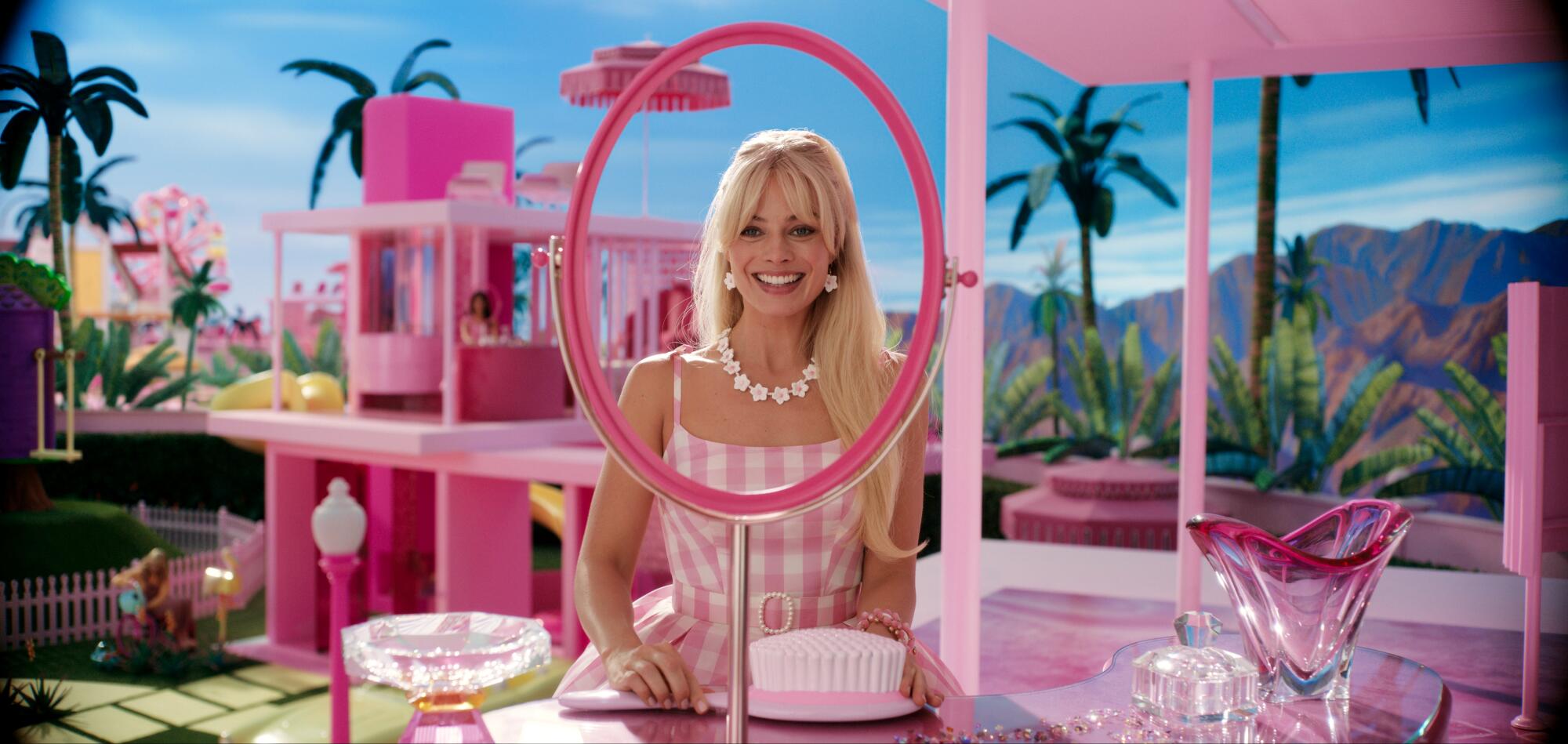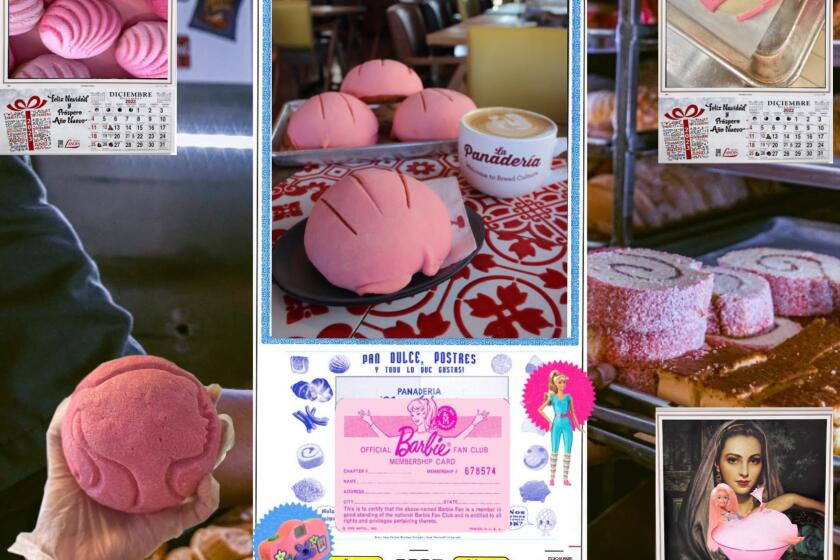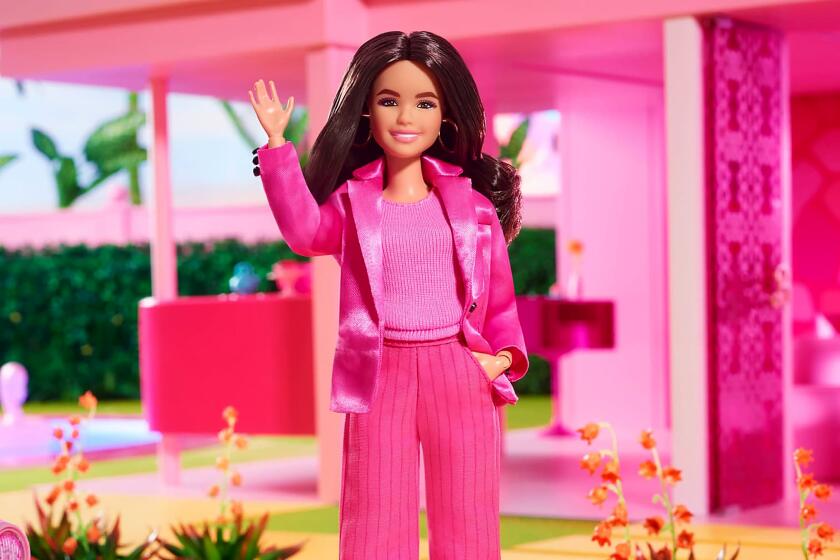
I took pride for a long time in not falling for the nostalgia marketing often targeted toward millennials — but then I learned about Greta Gerwig’s “Barbie” a year ago.
That’s when I started counting down the months until I could hand over my hard-earned money to the first theater that would sell me a ticket. Capitalism truly popped off with this one.
I went all out for the screening, including buying a new outfit and getting a hot pink manicure and pedicure. Seeing that others have done the same has made me happy, and it speaks volumes about Barbie’s influence.
In anticipation of the new “Barbie” film release this weekend, bakeries across the country have created a new type of Barbie to consume: a traditional Mexican concha.
I loved the movie. It did an excellent job analyzing whether the iconic blond doll with unrealistic body proportions can be a feminist icon. While I have also grappled with that debate, Barbie’s value in my life goes beyond this.
I’m a child of Mexican immigrants in the United States, and Barbie was one of my first and most vital links to American culture. I didn’t grow up with parents who listened to artists like Bruce Springsteen and watched shows like “Seinfeld,” so I’ve had to play catch-up as an adult. But I have connected with others through Barbie, especially now.
Still, how I got my nearly 40 dolls and played with them was unique to my first-generation immigrant experience.
The first one I ever got was Ocean Friends Barbie. I was 4 years old and my mom had decided I was old enough to be trusted around small plastic toy parts. As I excitedly opened the box, my mom reminded me that the doll had been expensive and that I must take good care of it. I still have that doll 27 years later.
We asked readers what Barbie meant to them. On Instagram, our followers shared a deep nostalgic connection, a lack of representation, and some said their families couldn’t afford the dolls.
Brand-new dolls like that were always a treat. I got them on birthdays or as a reward for academic achievements. Most of my Barbie dolls were secondhand, just like most of my clothes and furniture.
For years, my parents and I would wake up early every Saturday morning and cruise through Dallas’ wealthier neighborhoods — ones with white picket fences and two-story houses, vastly different from the area we lived in — searching for garage and estate sales.
I’ve never been a morning person, but the prospect of finding a few dolls at a garage sale was enough motivation to turn me into one temporarily. If we would drive up to a sale and I saw a teenage girl, I knew it would be worth it. I just crossed my fingers, hoping and praying they were selling the dolls for cheap.
If I was lucky, the dolls would be sold for 25 cents each. My dad — who had worked odd jobs to purchase his only toy as a child — would let me get as many as I wanted at that price. I’m assuming that’s exactly how it feels to win the lottery. My dad also always helped me sort through them to pick the best ones. But sometimes, we’d come across a sale that had them for $1 each, which meant I could get only about three. That was always a bit of a bummer.

At one garage sale, I found a dream house for $5. At another, a guy gave us a Power Wheels Barbie Jeep for free because he claimed it didn’t work. My dad hooked it up to an old car battery and I got to do wheelies in our backyard for years.
I was a Barbie girl in a budget world.
I also bought a lot of doll accessories and clothes at the sales, but sometimes my mom and I would work together to create an outfit from scraps of cloth she had lying around. I would draw a design, and my mom, a seamstress, would take my doll’s measurements and sew it within a few minutes. Sometimes she would let me use her sewing machine with her supervision and I would get to create the outfit from start to finish.
My mom grew up in rural Mexico as the oldest of 10. She only ever had one doll and her childhood was plagued with responsibilities. Meanwhile, I grew up as an only child in one of the biggest cities in Texas. Our vastly different upbringings have made it difficult for us to relate to each other at times, but our Barbie projects offered us a bridge into each other’s lives.
My mom would also play Barbies with me when she had time, but I mostly played with my dolls alone. I didn’t mind this because that’s when I could create a jucier story line without getting lectured.
All of my dolls were Latinas, no matter if they were blond, brunet, redhead, etc. They also had traditional names. Some highlights included Maria del Carmen, Victoria, Rosalinda, Maite and Lupita.
My storytelling took lots of inspiration from telenovelas, so, yes, there were many betrayals, slaps, failed weddings and car accidents. I’m pretty sure I screamed, “¡Maldita lisiada!” a few times during my gameplay. Since I had only three Ken dolls, the fighting made sense. Only the best doll would get her dream match, and they truly had to work for their happy ending.
These memories are why I didn’t think twice about paying $20 for a movie ticket. It was worth every penny. I felt a sense of belonging as I sat in the frosty theater with several others who also donned their hottest pinks — a feeling that as a Latina I tend to never take for granted. I’m glad I had Barbie as a girl and I’m thankful for my parents for doing everything they could to give her to me.
More to Read
The Latinx experience chronicled
Get the Latinx Files newsletter for stories that capture the multitudes within our communities.
You may occasionally receive promotional content from the Los Angeles Times.










